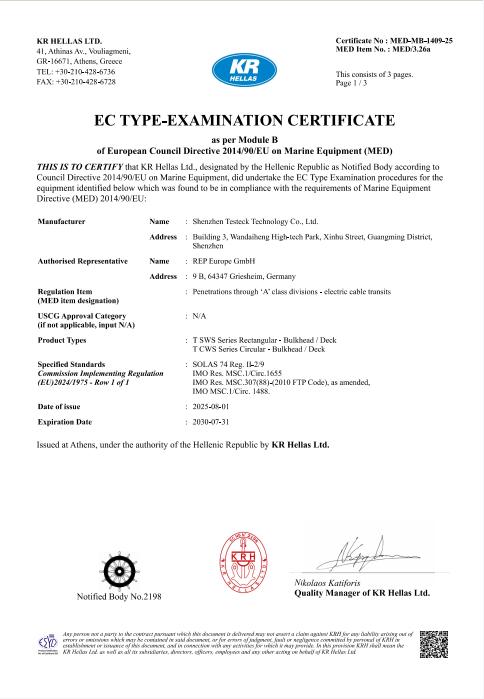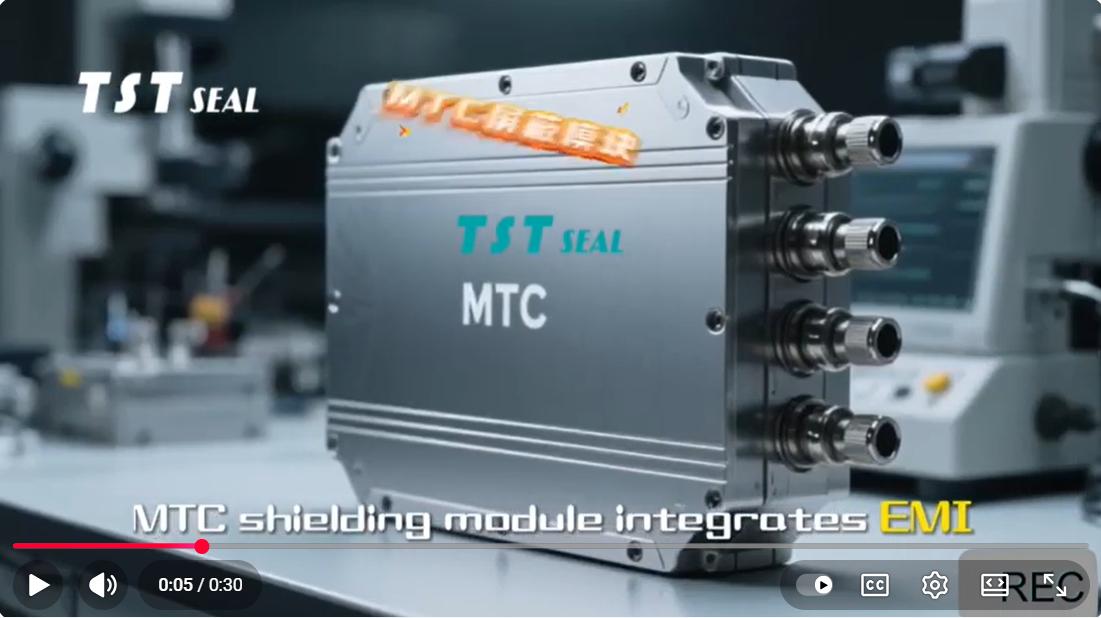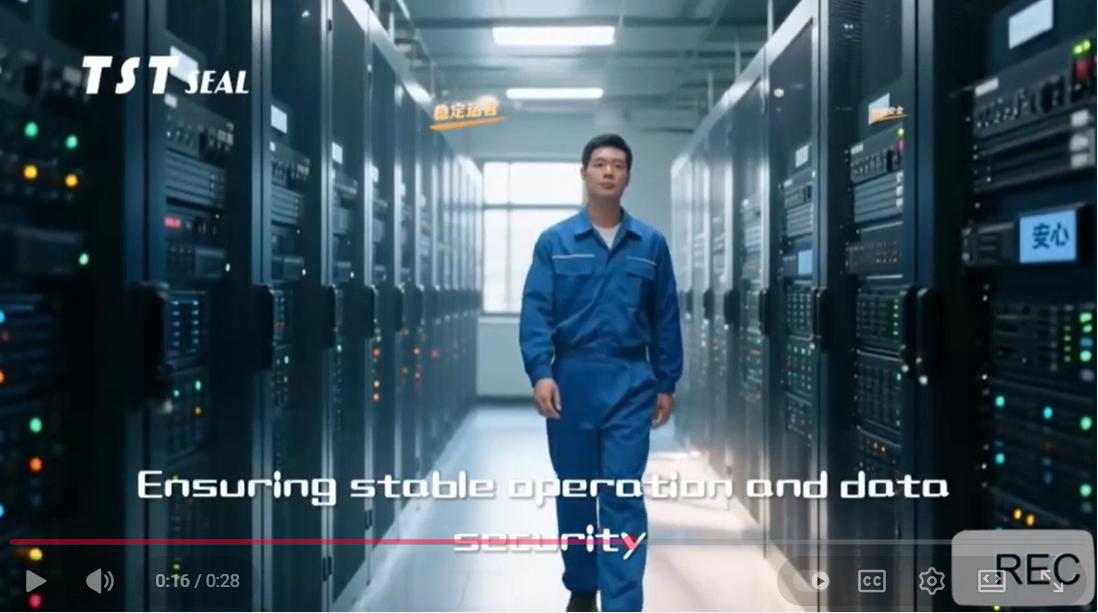
TST Seal :
- Fireproof
- Cable fixinAg
- Watertight
- Airtight
- Dustproof
- Noise reduction
- Vibration reduction
- Pressure resistance
- Corrosion resistance
- EMI/EMP
- Pest & rodent resistance
Related Articles
- circular seal (7)
- flange sealing (1)
- industrial sealing (2)
- MCT Transit Sealing System (2)
- rectangular seal (34)
- sealing modules (31)
- sealing solution (12)
The "Invisible Steward" of Hyperscale Data Centers: TST SEAL Sealing Modules: PUE Below 1.2
How do TST SEAL Sealing Modules reduce PUE to below 1.2?
In the digital economy, hyperscale data centers are the “heart of computing power.” But you might not know that the biggest daily headache for these behemoths, often housing tens of thousands of cabinets, isn’t a shortage of computing power, but rather high energy consumption, chaotic management, and difficulty expanding capacity.
Traditional computer rooms resemble “large flats,” where hot and cold air mix together and air conditioning runs 24/7. The PUE (Power Usage Effectiveness) is consistently above 1.8 year-round, meaning that for every kilowatt-hour of electricity used to power the servers, an additional 0.8 kilowatt-hour is spent on the air conditioning. This is not only wasteful but also a fatal flaw in meeting the “carbon peak” target.
So what’s the solution? The TST SEAL sealing module solution. It’s like putting “isolation suits” on each cabinet, transforming the data center from a “big pot” into “small private rooms,” enabling precise cooling, intelligent management, and rapid capacity expansion. Today, everyone from JD Cloud to Huawei to major carriers is rushing to adopt TST SEAL sealing modules.
Headline: The Three Chronic Problems of Traditional Data Centers
Cold and Hot Air Cross-Contamination: Air Conditioning Works in vain
Cool air from the air conditioner is “hijacked” by hot air before it reaches the servers, resulting in woefully low cooling efficiency.
Slow Expansion: Building a Data Center Takes Two Years?
Traditional construction cycles are long, with civil engineering, cabling, and commissioning layered together. By the time construction is complete, business needs have long changed.
Operations and Maintenance rely on manual oversight, requiring waking up in the middle of the night for alarms.
Manual inspections of thousands of devices are inefficient, prone to errors, and result in slow response to faults.
These problems are magnified in hyperscale data centers. TST SEAL sealing modules are designed to address these issues.
Core Weapon: TST SEAL Sealing Modules—the “Lego Bricks” of the Data Center
TST SEAL sealing modules are not a single product, but a set of integrated, prefabricated, and intelligent sealing units. It typically includes:
Sealed cold/hot aisles: Cabinets are enclosed with glass doors and ceiling panels to create isolated spaces, with cold air flowing only through the “cold aisle” and hot air flowing only through the “hot aisle,” completely eliminating mixed airflow.
Smart power distribution: Precision power distribution cabinets and battery monitoring provide a clear view of power usage and battery health.
Dynamic environment monitoring system: Temperature, humidity, smoke detection, water intrusion, and access control are all integrated, with remote monitoring via a mobile app.
Modular UPS and air conditioning: Configurable on demand, with only what you need, eliminating the “big horse pulling a small cart” approach.
Simply put, a TST SEAL sealed module is a “smart computer room box” with built-in air conditioning, power, and monitoring.
Real-world examples: These giants rely on it to reduce costs and increase efficiency.
JD Cloud uses the next-generation sealed module: achieving a PUE of 1.25 and doubling operational efficiency.
JD Cloud fully utilizes the sealed module architecture at a hyperscale data center in East China. Each module supports over 40 cabinets, features sealed cold aisles, and is equipped with variable-frequency air conditioners and AI energy-saving algorithms. Results: PUE dropped from 1.6 to 1.25, saving over 30 million yuan in annual electricity costs; operations and maintenance shifted from manual monitoring to system alerts, reducing fault response time from hours to minutes.
TST SEAL Intelligent Sealing Module 6.0: 7-Day Delivery, Rapid Rollout
TST SEAL Intelligent Sealing Module 6.0 features “Extremely Simple Delivery.” All components are prefabricated in the factory and assembled on-site like Lego.
Case Study: A carrier built a new data center, which traditionally would have taken 18 months. Using TST SEAL sealing modules, deployment was completed in just 7 days, accelerating service rollout by 90%.
A Bank’s Disaster Recovery Center: Meeting Dual Standards for Security and Energy Efficiency
The financial industry places extremely high demands on stability. This bank uses TST SEAL sealing modules to achieve integrated monitoring of power, environmental, and fire protection, providing real-time electrical contact temperature alerts. This has resulted in a stable PUE below 1.3 and zero major failures for three consecutive years.
Industry Trends: From “Building a Computer Room” to “Buying a Service”
Prefabrication and Productization Become the Mainstream
TST SEAL sealing modules are standardized, like household appliances, allowing plug-and-play installation on-site, shortening construction cycles by over 90%.
AI + Intelligent Operations and Maintenance
Combined with AI algorithms, they automatically adjust cooling and optimize loads, enabling “unmanned” data centers.
Inherent Demand for Green and Low Carbon
The “East-West Computing” project explicitly requires a Power Usage Effectiveness (PUE) below 1.3, making TST SEAL sealing modules the preferred choice for meeting this requirement. Paired with photovoltaics and energy storage, creating “zero-carbon data centers” is a new trend.
Miniaturization and Edge Computing
Not only in hyperscale data centers, but also in edge computing scenarios, mini TST SEAL sealing modules are being used to meet the low-latency requirements of 5G, 6G, the Internet of Things, and artificial intelligence.
The Future Has Arrived: TST SEAL sealing modules are standard, not optional.
In the past, TST SEAL sealing modules were considered “high-end features”; now, they are standard in hyperscale data centers. From Ankerui’s energy efficiency management to Huawei and Inspur’s hardware solutions, the industry chain has matured.
In the future, as demand for computing power explodes, data centers will become smarter, greener, and more efficient. The TST SEAL sealing module is the foundational technology for this transformation. It not only saves energy, provides security, and ensures stability, but also represents a crucial step in transforming data centers from energy-hungry wastelands to intelligent engines.
In short: in the future, if you don’t understand how to use sealing modules, forget about building a data center.
Free Sample | Customization Supported | Global Sales | Factory Direct Sales | Agents Welcome (Email:alixich@tstcables.com)







